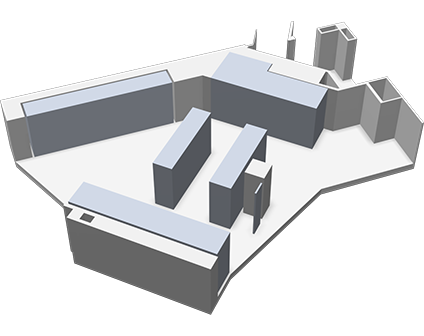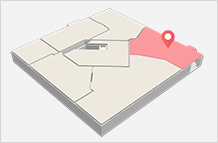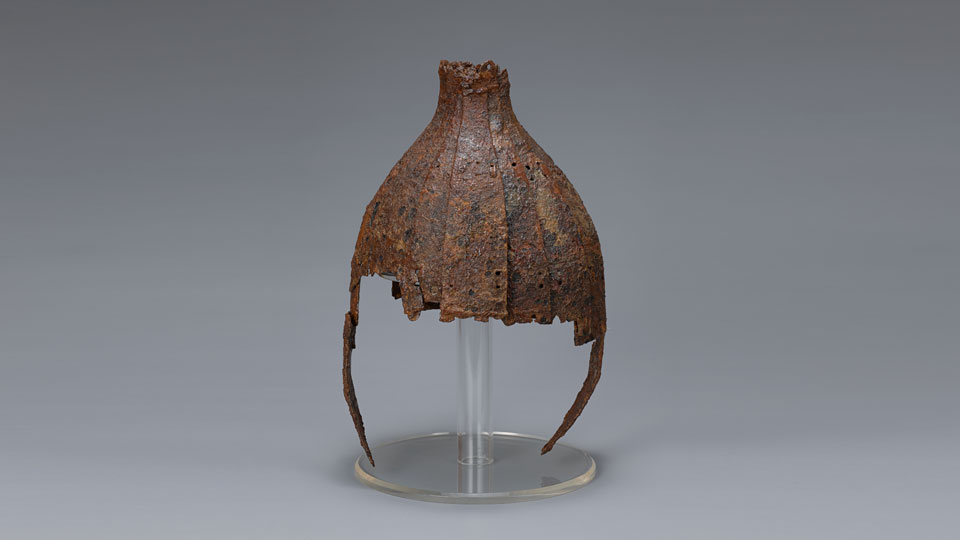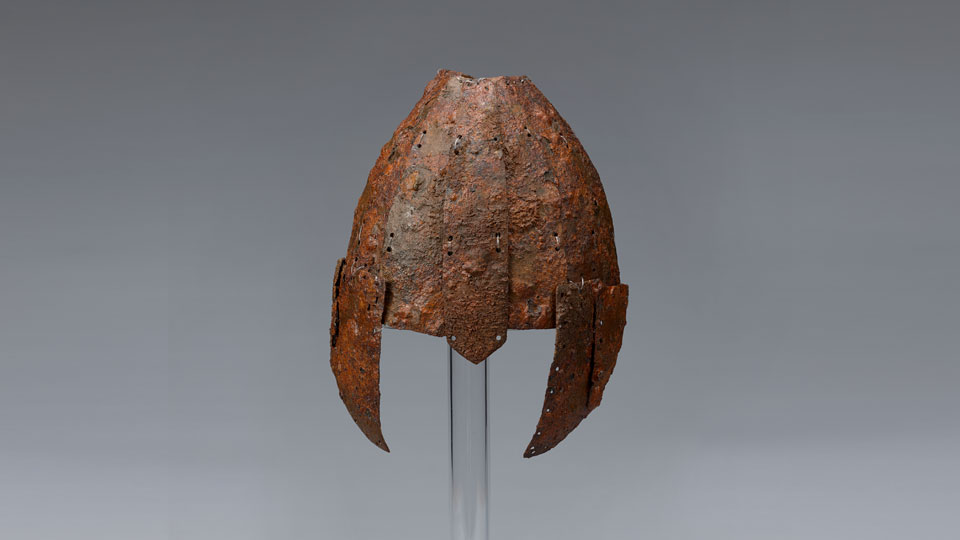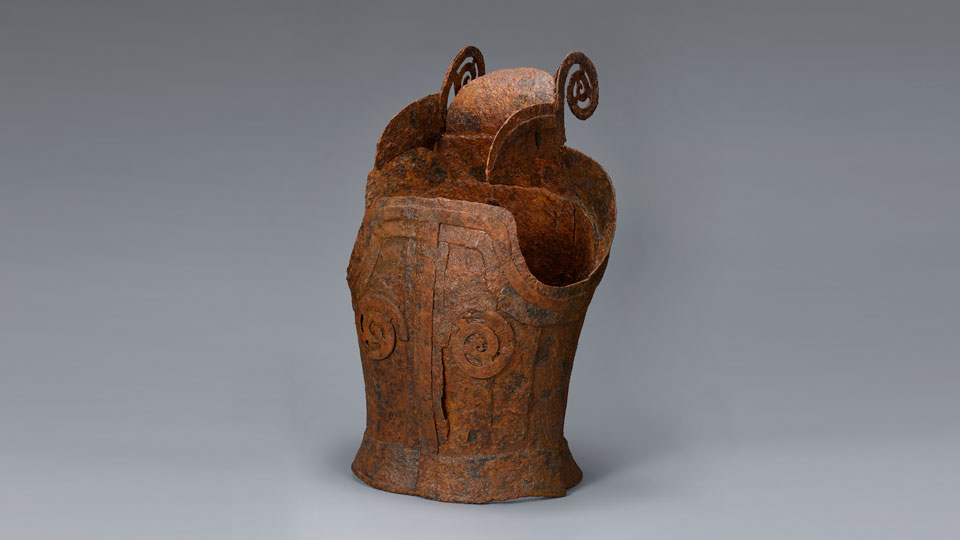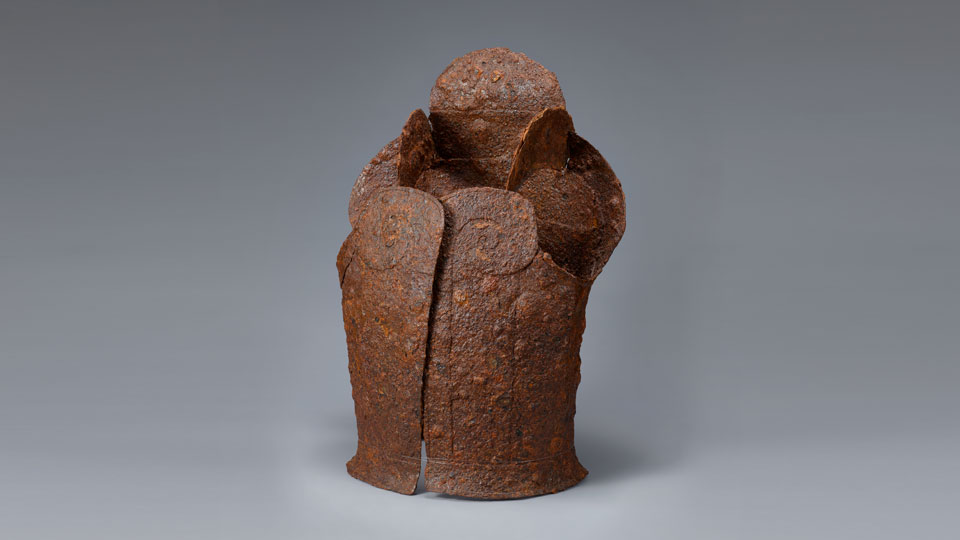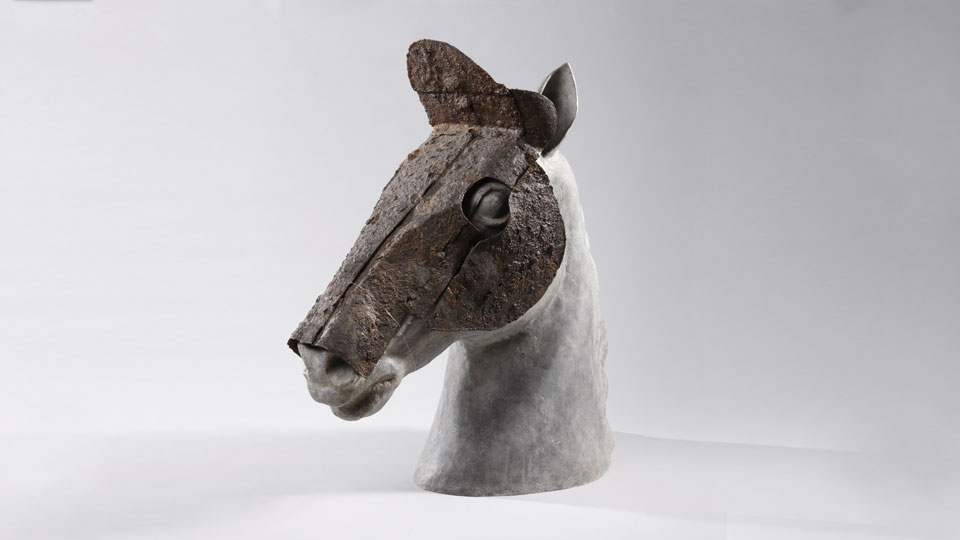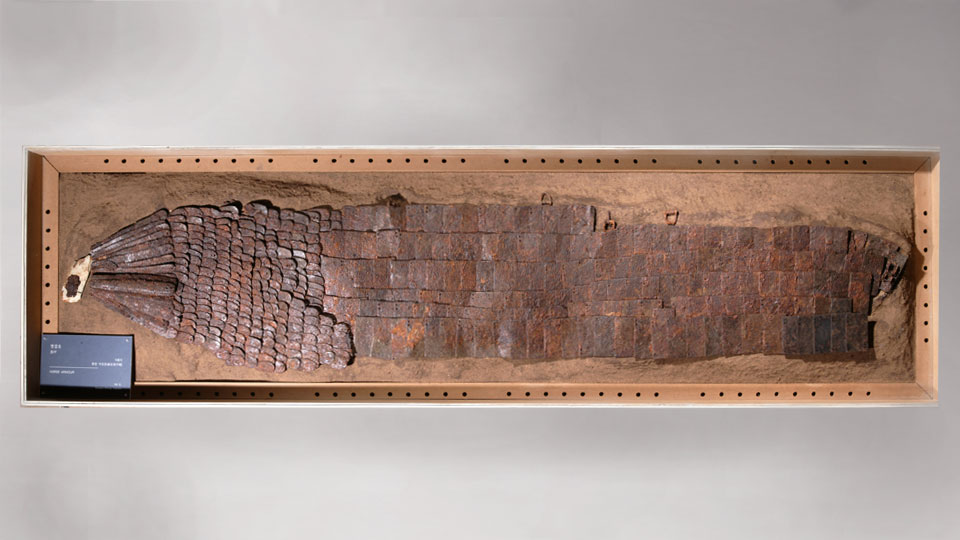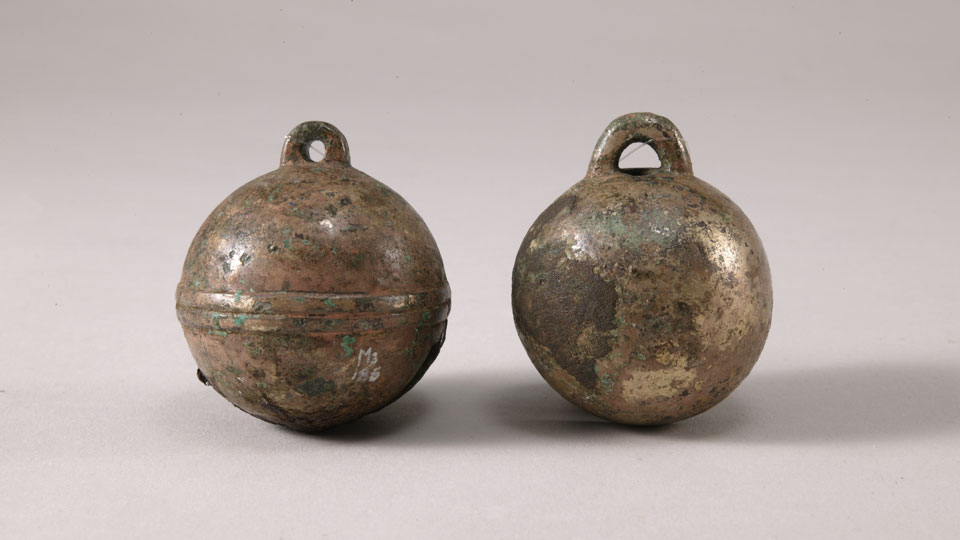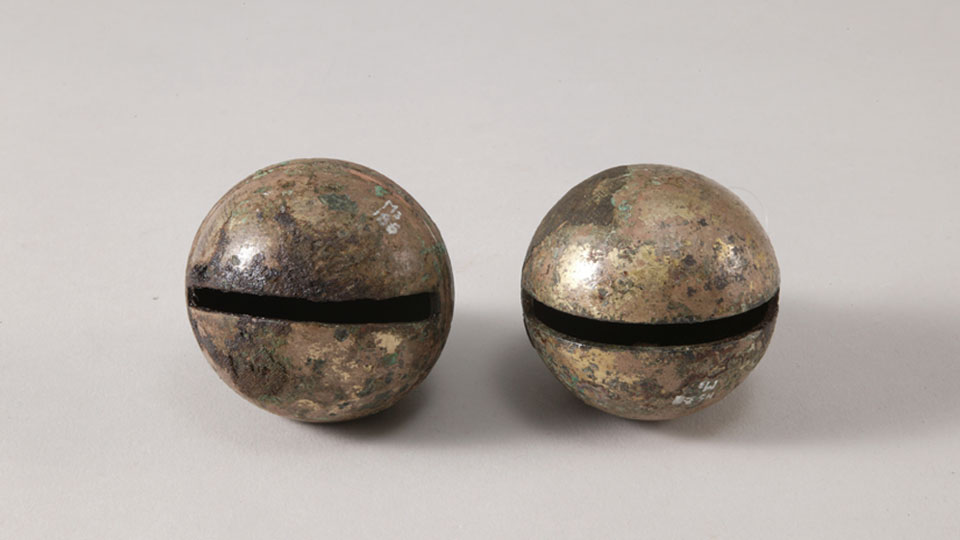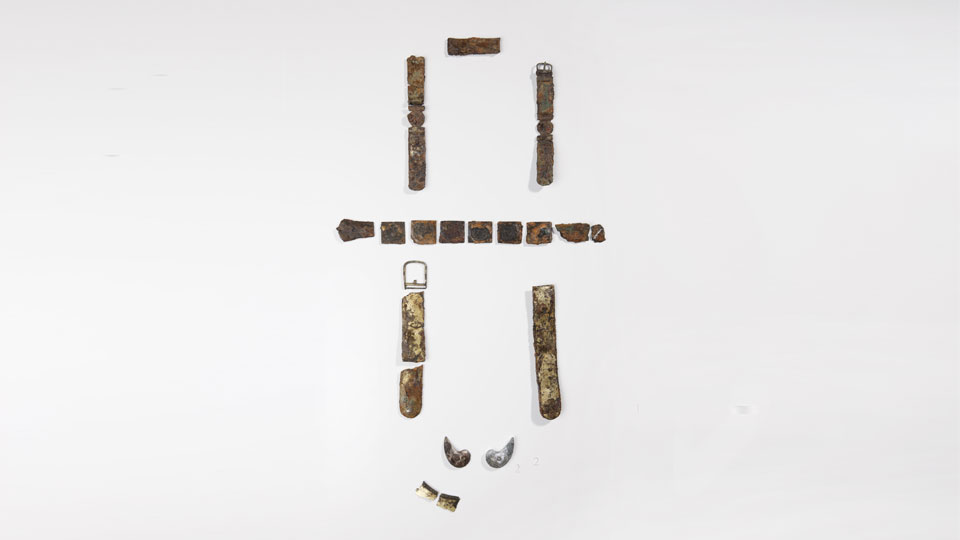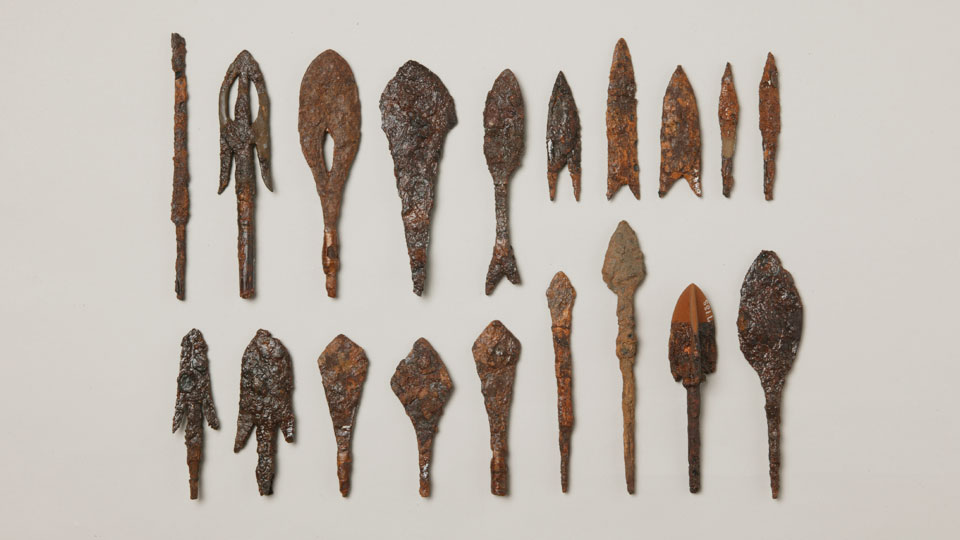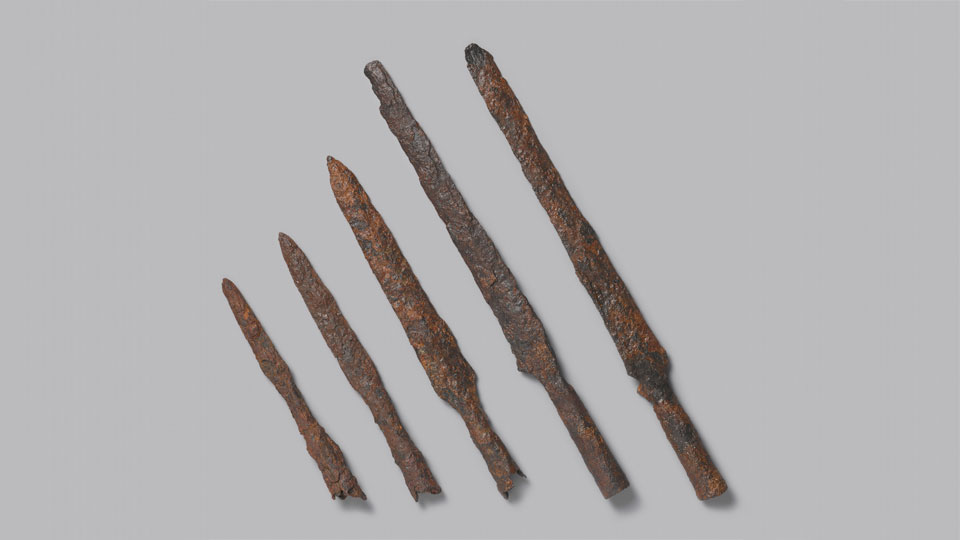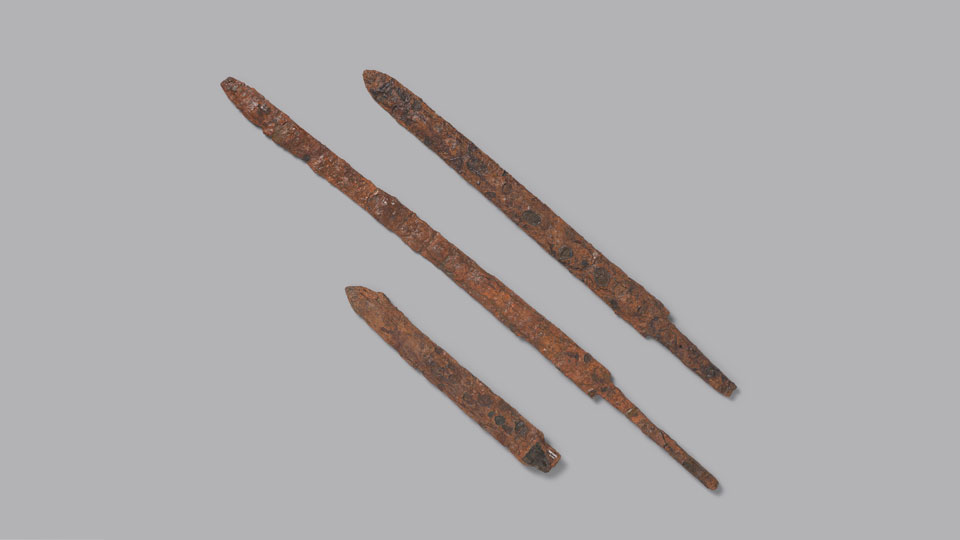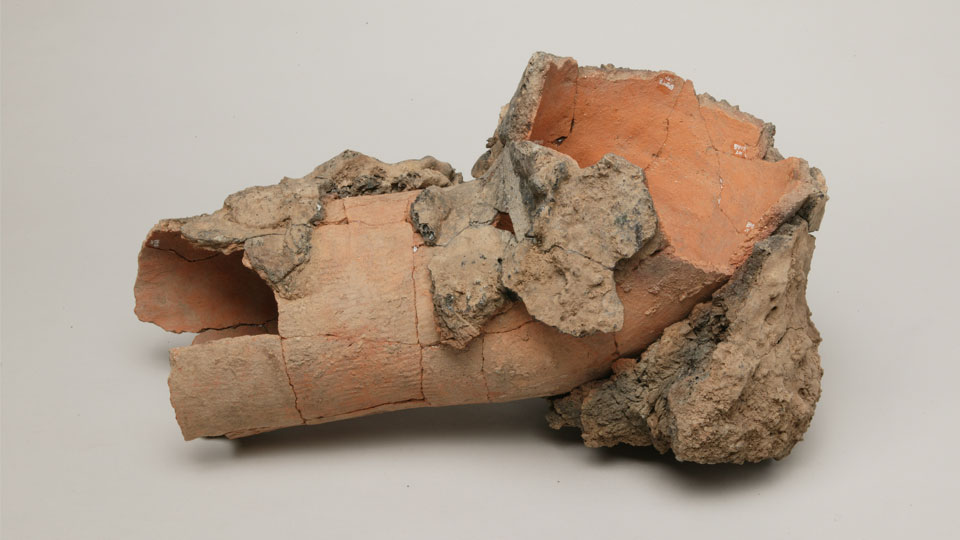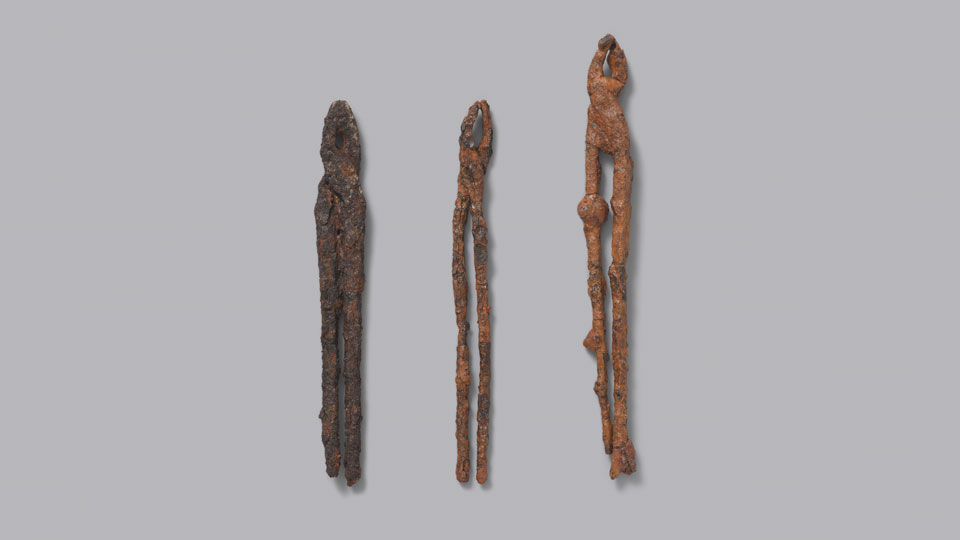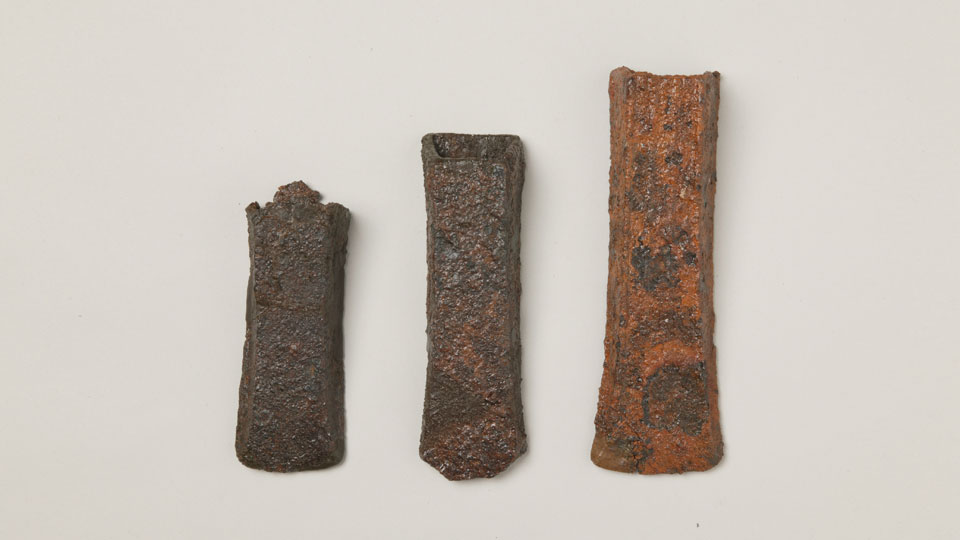Gaya, Kingdom of Iron
Iron is sturdier than bronze and can be used for a longer period of time, making it a highly useful material. Iron objects buried with knife coins (mingdaoqian), which were used during Yan China (323–222 BCE), were recovered from the Early Iron Age site of Yongyeong-dong, in Weiwon-gun Province, North Pyeongan Province. These artifacts indicate that iron culture was introduced into the Korean Peninsula around this time.
Iron provided the basis for Gaya’s growth. Iron production and the widespread use of iron tools acted as a motor for social change and development in ancient societies. It is recorded in Sanguozhi Weishu Dongyizhuan (Records of the Three Kingdoms, Book of Wei, Biography of the Eastern Barbarians) that iron produced in this region was also used as a form of currency. Iron was also in important trade item was exported to Nangnang (Lelang), Daebang (Daifang), and Wa (Japan). Iron ingots excavated from Gays sites are standardized in weight and form, which indicates that they may have indeed been used as a medium of exchange during trade or as a form of currency.
Body armor was worn to protect the wearer from sword and arrow attacks during battle. Originally made of leather or wood, iron versions began to be used following the development of iron manufacturing technology. Iron armor can be divided into vertical plate armor and lamellar armor, according to the shape of the iron plates or scales forming the armor’s body section. These iron pieces were connected using rivets or leather ties.
The production of iron armor required manufacturing skills of the highest standard since the armor had fit well in addition to protecting the wearer. Decorative elements were also added. Armor decorated with bird-shaped or fern-shaped iron pieces have mainly been found in the Yeongnam region. Excavated suits of iron armor weigh around 4-5 kg but they world have been heavier prior to corrosion. Helmets were made using long strips of iron that were connected using rivets or iron ties. The helmet top was sometimes decorated with a feather. Diverse forms of iron helmets have been found: semi-globular-shaped helmets crafted using long vertical plates, helmets with a visor, helmets with a frontal protrusion, and helmets with a protrusion on the top.

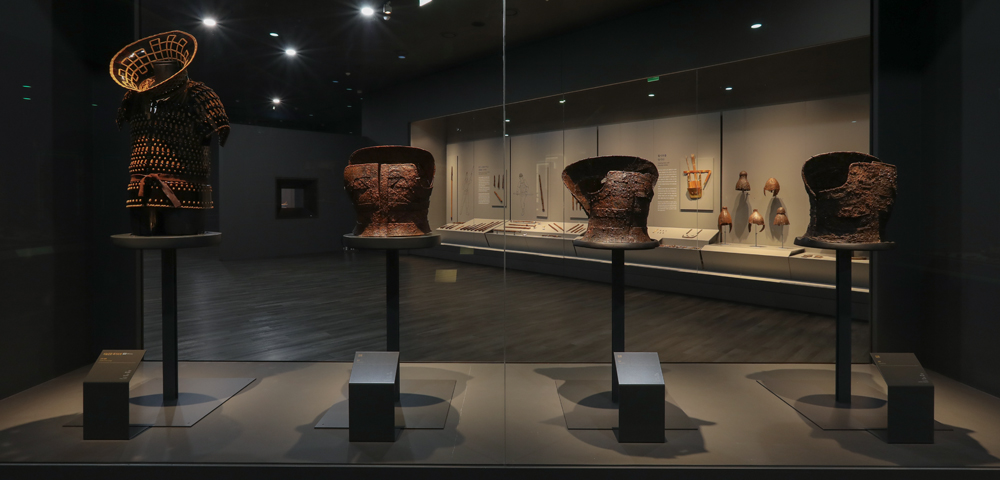
-
Helmet Haman, Dohang-ri,
Height: 33.5cm -
Helmet Gwimyeong-ri, Miryang,
Height: 26.0cm -
Plate Armor Twerae-ri, Gimhae,
Height: 70.0cm
-
Plate Armor Yangdong-ri, Gimhae,
Height: 66.0cm
Horses have been actively used in warfare since the Three Kingdoms Period. The heavy cavalry consisted of warriors and their horses which were both heavily armed with iron armor. The role of the heavy cavalry was mainly to charge towards the enemy line and to break the infantry unit’s position. The charging warrior stood, bracing against the stirrups and holding the reins of the saddled horse. The stirrups provided support, allowing the warrior to maintain a stable posture when shooting arrows or wielding a spear.
The existence of Gaya’s heavy cavalry can be inferred from archaeological evidence obtained from numerous sites, such as Magap-chong Tomb (Haman), Jisan-dong Tomb 75 (Goryeong), and Okjeon M3 Tomb (Hapcheon). Since these tombs were the final resting places of Gaya kings and royalty, one might think that the heavy cavalry horse gear found within had merely been placed as grave goods to demonstrate the deceased’s social status. However, it is highly possible that they may have also been used during actual battle. Gaya horse armor and horse head guards provide us with a glimpse of Gaya’s iron manufacturing technology, which was the most sophisticated of its time, as well as demonstrating how it was involved in fierce battles with neighboring countries.
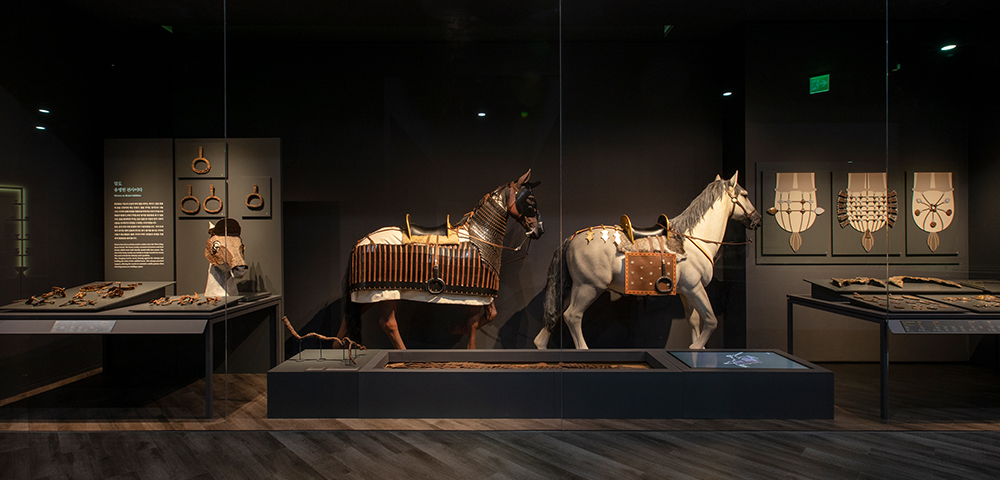
-
Horse Headguard Busan, Bokcheon-dong,
Height: 41.0cm -
Horse Armor Magapchong, Haman,
Length: 225.0cm -
Stirrup Haman, Dohang-ri,
Length: 27.2cm
-
Gilt-Bronze Horse Bells Okjeon, Hapcheon,
Diameter: 6.5cm -
Gilt-Bronze Horse Bells Okjeon, Hapcheon,
Diameter: 6.5cm
Korea has a long tradition of archery. Bows, arrows, and quivers were mainly made of wood and leather and so are rarely preserved, but the few instances in which they have been found intact make it possible to infer their appearance. Different types of arrowheads were crafted according to the different functions that they served (for signaling, for inflicting direct bodily harm, for fire attacks). Arrowheads have been found in tombs, placed within quivers. The exterior of the quiver was sometimes decorated and covered with lacquer, and gold, silver, and gilt-bronze pieces were used to decorate the edges of the quiver, as well as the quiver strap. By reconstructing the shape of the quiver, it is possible to infer how it may have been won.
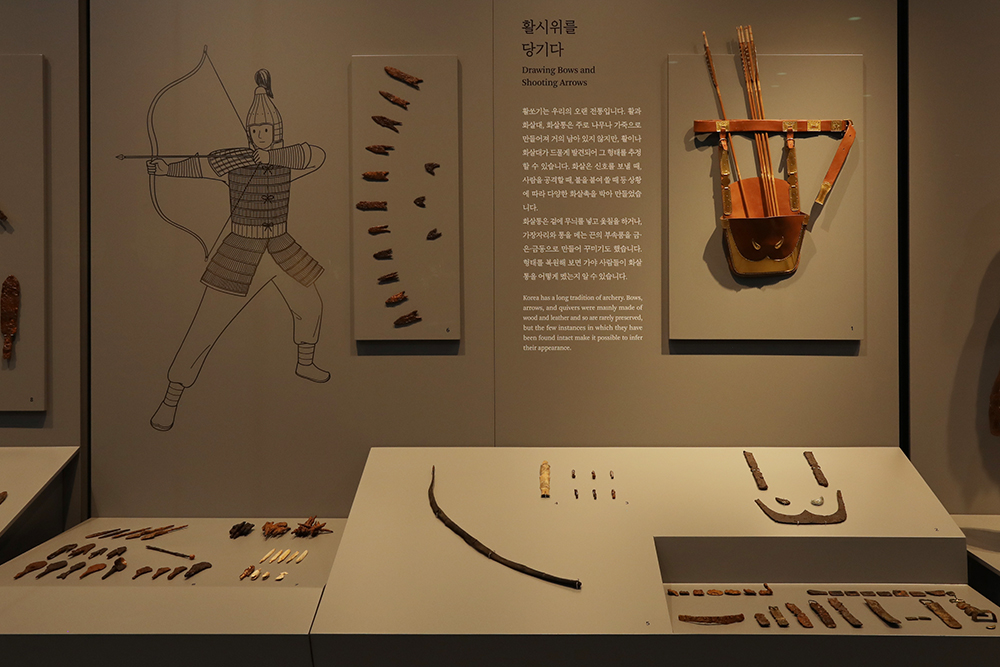
-
Quiver Ornaments Haman, Dohang-ri∙Daho-ri, Changwon∙Jisan-dong, Goryeong,
Length: 3.3cm(Comma shaped Ornament) -
Iron Arrowheads Haman, Dohang-ri∙Bukbu-dong, Gimhae,
Length: 16.0cm(upper left)
Gaya was often subjected to attacks from neighboring kingdoms due to its plentiful iron resources and fortuitous location for trade. This can be gleaned from the numerous accounts of battle that can be found in the Samguk Sagi (History of the Three Kingdoms). Frequent battles resulted in various technological developments that increased the slashing capacity of knives and swords and the penetrating capacity of spears and arrows.
Weapons were used in battle but long swords featuring dragon or phoenix decorations at the base of the hilt or very long spears were also used for exchange or to display social status. It is therefore possible to infer the status of the deceased based on the types and amount of iron weapon placed in his or her tomb.
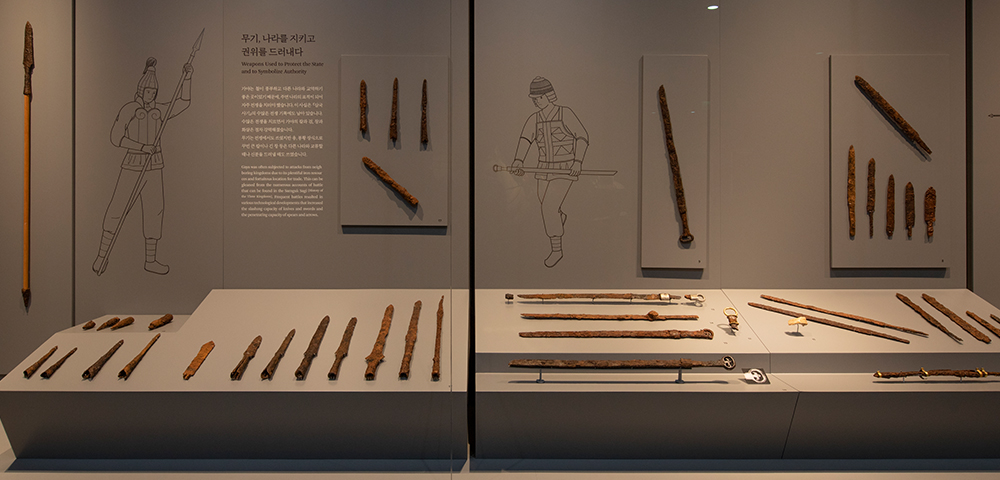
-
Iron Spearheads Daeseong-dong, Gimhae∙Yangdong-ri, Gimhae,
Length: 52.1cm(left) -
Iron Swords Yangdong-ri, Gimhae∙Hapseong-dong, Changwon,
Length: 50.0cm(middle) -
Swords Hapseong-dong, Changwon∙Shinan, Miryang,
Length: 73.0cm(lower)
Iron production and the widespread use of iron products were the driving force behind social change and development in ancient society. This is evidenced by the numerous iron artifacts recovered from tombs. The iron production facilities discovered at Goseong shell midden, the sites of Hagye-ri and Yeorae-ri (Gimhae) and the site of Bongrim-dong (Changwon), as well as the iron forging tools (tongs, anvils, and hammers) identified at tombs shows that Gaya’s smelting, casting, forging technology has reached a considerable level. Iron production at the time was a state-of-the-art technology and so the passing on of technological knowledge was done in secrecy between those who oversaw the manufacturing process. This is because the difficult and complicated process of iron manufacture (from ore extraction to smelting and refining) required specialized knowledge and skilled technology. The burials of iron craftspeople were discovered at the site of Soeop, in Toorae-ri, Gimhae, and were found to contain grave goods in the form of forging tools, such as tongs and a hammer. Of these, Burial 1 yielded a long sword with a ring-shaped pommel end alongside ironworking tools, indicating the deceased’s high social status. The high status of iron craftspeople demonstrates that iron production technology was recognized as being very important and managed accordingly.
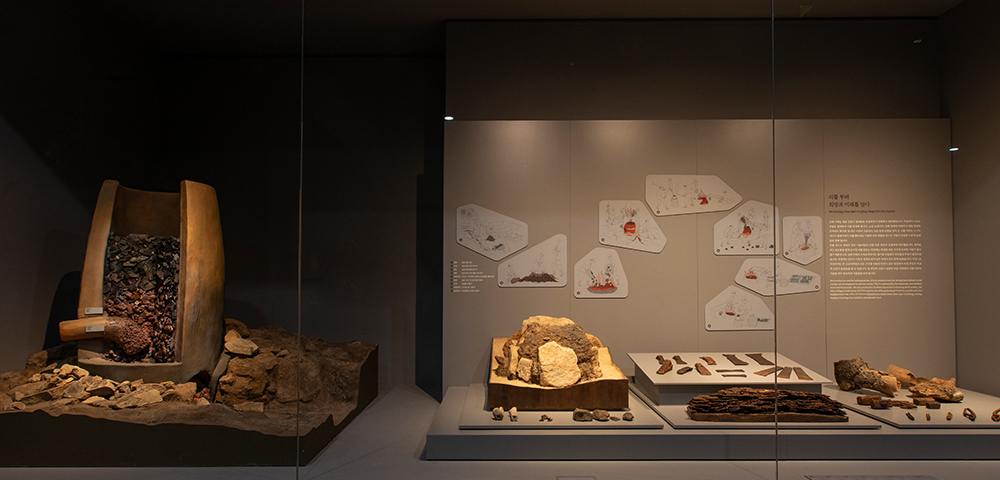
-
Tuyere Sachon-ri, Miryang,
Length: 44.0cm -
Iron Tongs Micheon-ri, Miryang∙Wolsan-ri, Miryang∙Hapseong-dong, Changwon,
Length: 22.8cm(right) -
Iron Axes Okjeon, Hapcheon∙Ogok-ri, Haman,
Length: 17.5cm(left)
-
Iron Ingots Haman, Dohang-ri,
Length: 22.5cm(left)
